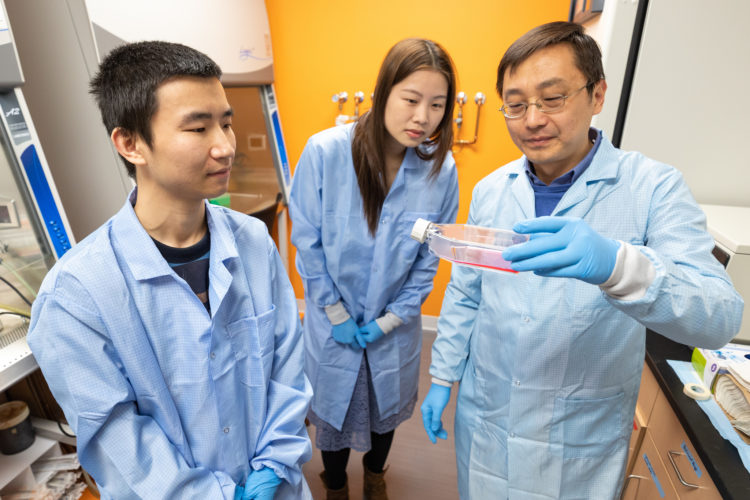Qingcheng Mao collaborates with colleagues across UWSOP to gain insight into how pregnancy affects drug disposition in expectant mothers and their fetuses

About 80% of pregnant women take at least one medication to treat everything from high blood pressure to depression to diabetes and more. The risks for mother and child vary from drug to drug. With almost 12,000 drugs on the market, it’s very hard to test all the drugs, how they interact, and how pregnancy can affect the drugs’ impact on the body. And it’s virtually impossible to test the effect illicit drugs have on expectant mothers and their babies.
For fifteen years, Associate Professor Qingcheng Mao has made it his life’s work to find another way to predict how licit and illicit drugs affect the mother and fetus. “The mechanisms are still not well understood, leaving these populations vulnerable,” he shared. “I want to develop a thorough understanding of the mechanisms by which pregnancy alters how drugs affect the body and particularly the fetus. There is a lot of work we can do in this very important and promising area of research.”
First, Qingcheng needed a reliable model to study the mechanisms of drugs and how they impact pregnant women and their babies. Working with UWSOP researchers Professors Mary Hebert and Jash Unadkat, he was one of the first to demonstrate that the way drugs are metabolized and cleared in pregnant women can be replicated in mice. He then looked at glyburide, a drug used to treat gestational diabetes that is increasingly prescribed as it is easier to take than insulin.
“It’s neither ethically feasible nor desirable to conduct clinical studies in pregnant women for ALL drugs. Instead, we look at how pregnancy alters the mechanisms for how the body handles drugs to gain insight into their safety and efficacy.” — Qingcheng Mao, Associate Professor, Pharmaceutics
The danger is that babies born to mothers who take glyburide face a number of complications, including respiratory distress, low blood sugar, and more. Qingcheng found one transporter protein that can limit fetal exposure to glyburide by returning the drug back into the mother’s circulation, making it safe for the baby. Misuse of licit and illicit drugs, including opioids, can double or triple the risk of stillbirth and cause withdrawal symptoms (neonatal abstinence syndrome or NAS). Buprenorphine and methadone are commonly used to curb the abuse of prescription opioids and heroin, but little was known about their effect on fetuses and infants.
Qingcheng was the first to find a mechanism that could induce a protective protein (breast cancer resistance protein [BCRP]) to limit fetal exposure to these drugs, making them safer for the baby when mothers take them to tackle their addiction during pregnancy.
Qingcheng’s findings have the potential to improve drug safety for mothers and their babies. He plans to continue his research and hopes to look at the effect of cannabis, which is widely used and little studied. His knowledge of these mechanisms increases the ways in which drug safety can be analyzed—saving the lives and health of these vulnerable populations.
To study with researchers like Pharmaceutics’ Associate Professor Qingcheng Mao, click on the links for more information about our Graduate Programs in Medicinal Chemistry, Pharmaceutics, Pharmaceutical Outcomes Research and Policy, and Biomedical Regulatory Affairs.